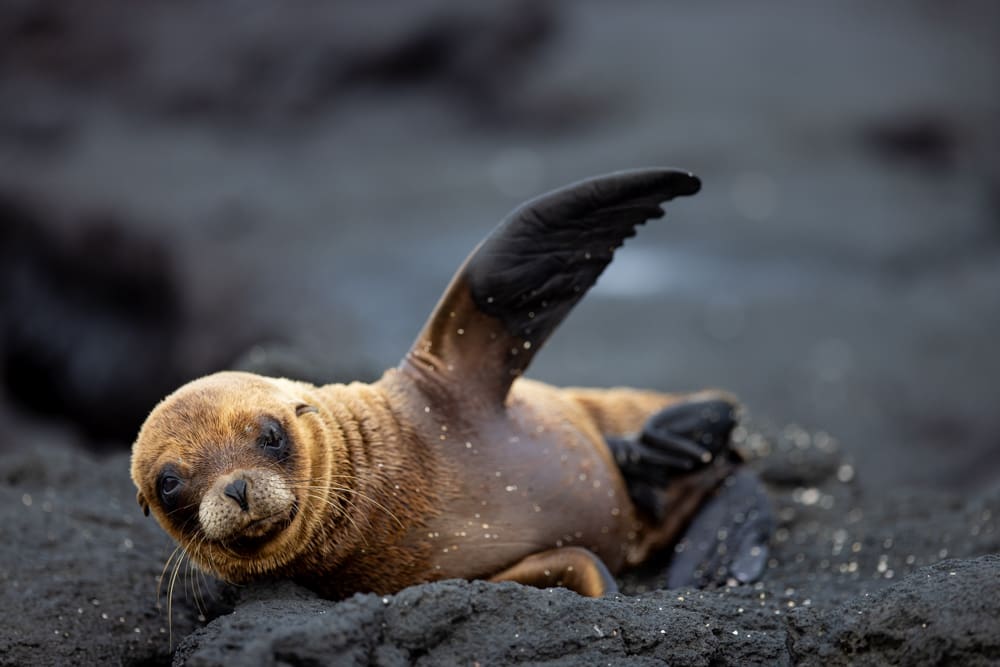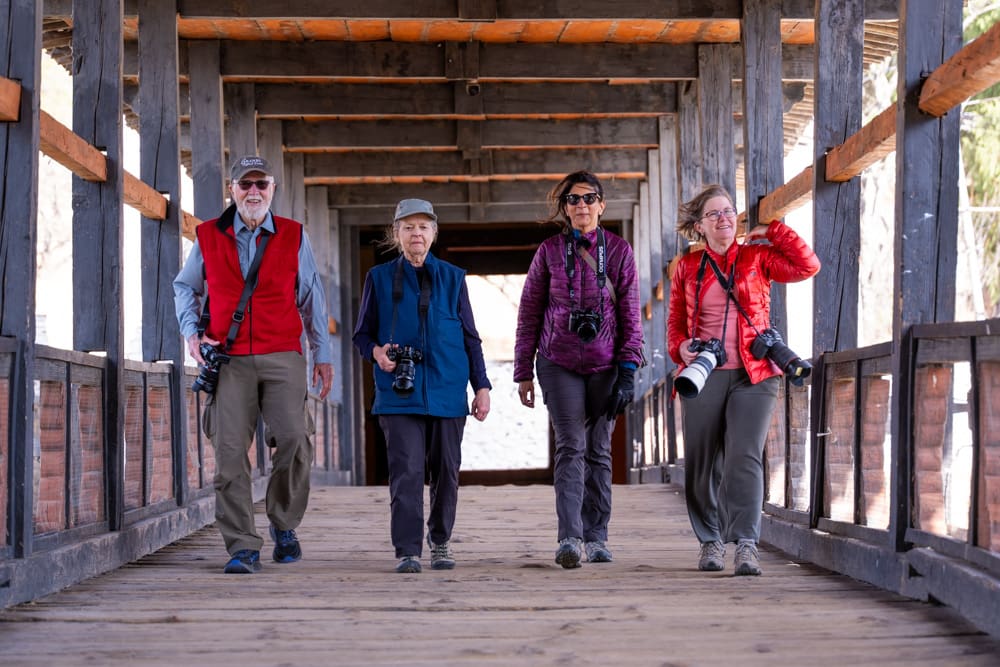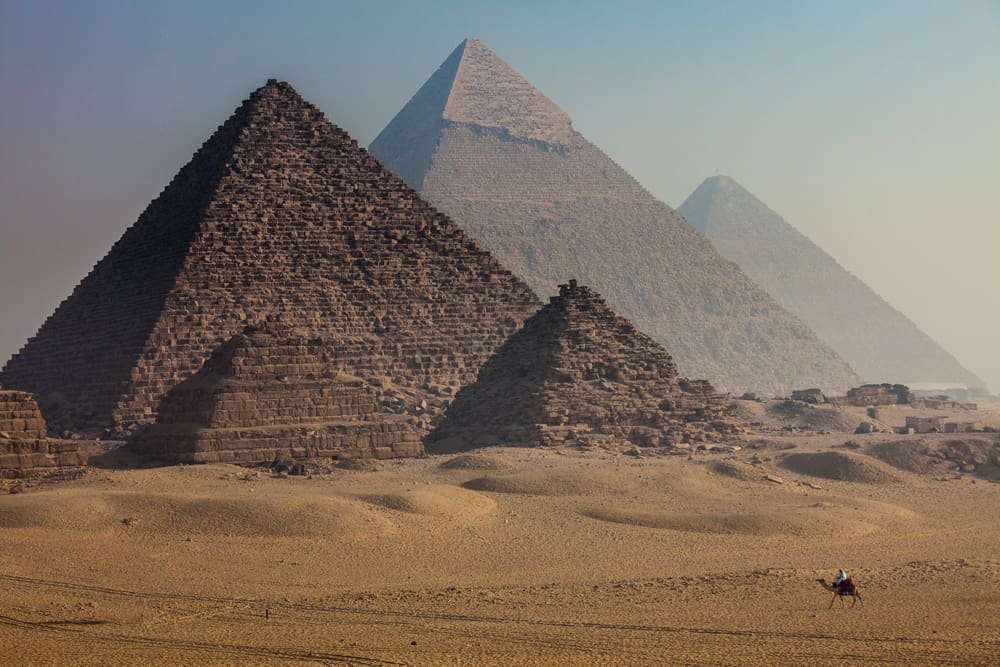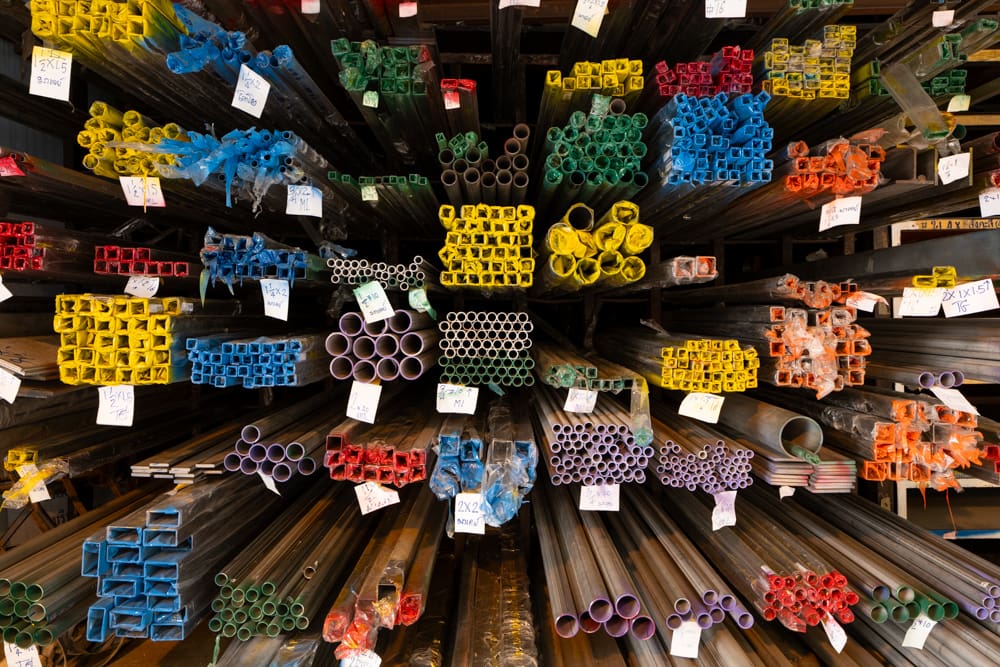Sixteen photographers, nine islands, eight days, and a hundred thousand photographs sums up our recently completed Wild Galapagos Photo Tour in a nutshell. I’m pleased to report that our extensive planning, preparation and scouting of the Galapagos Islands has resulted in a very successful first photography tour in this unique location.
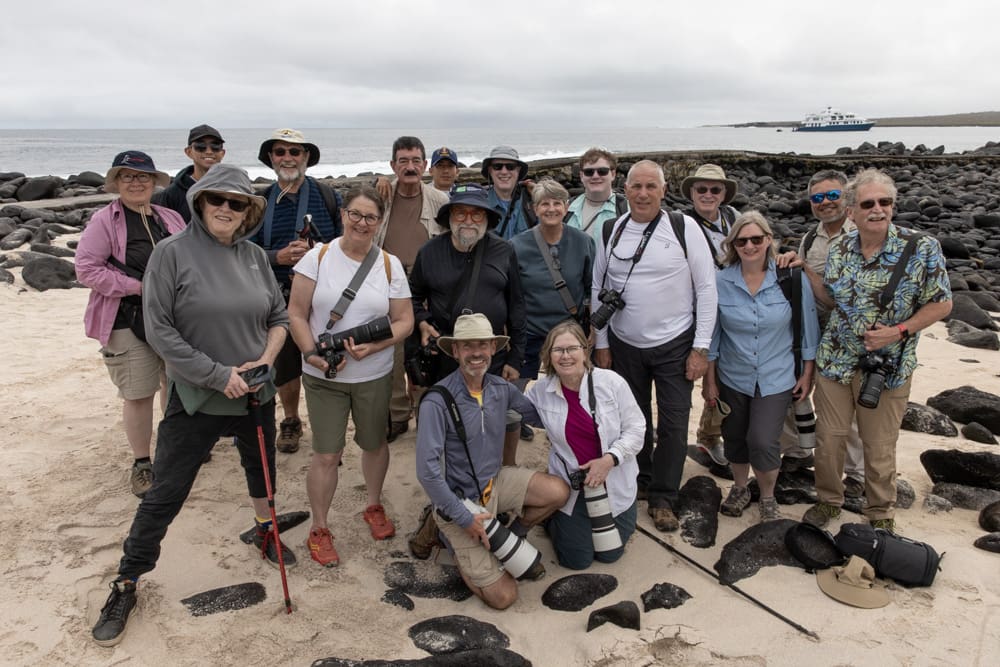
Wild Galapagos Tour participants: John & Michelle Greengo (front row) at Suarez Point, Espanola Island
A wide variety of photographers from north America joined my wife, Michelle, and I for a photography-orientated tour of the Galapagos. Participants ranged in age from 25 to 80, with a near even split between male and female; and experience levels varied from rank amateur to professional with most at the enthusiast level.
This was the first experience in the Galapagos for most of our travelers. What seemed to most impress people was the pristine beauty of the islands and the proximity and access to a wide variety of wildlife. Each day provided a different experience and a unique photographic opportunity.
The tour
Our group met in Quito, a relatively easy 5 hour international flight from the US mainland with minimal time zone change. We then traveled as a group on a flight 600 miles west into the Pacific Ocean where we landed at one of the two main airports on the islands. We were quickly shuttled to our awaiting luxury yacht where we settled in for the next week.
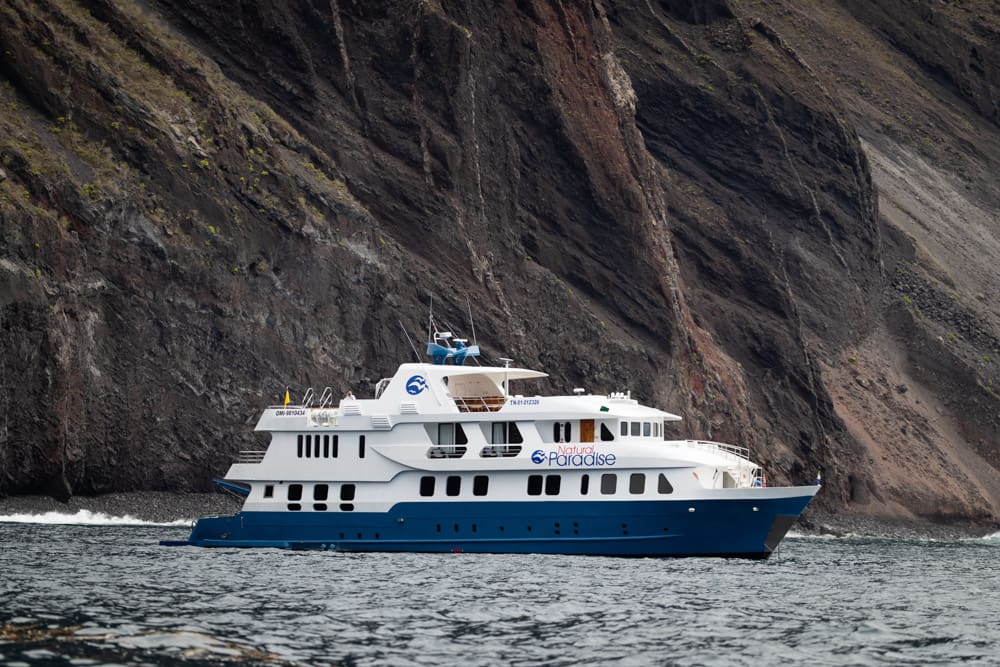
Our Luxury Yacht, Natural Paradise
We had chosen what we believed to be the ideal route; it allowed for landings on 8 islands and toured the far western reaches of the islands, which are inaccessible to day travelers. We prioritized time on land as it provided the greatest control for photographing animals.
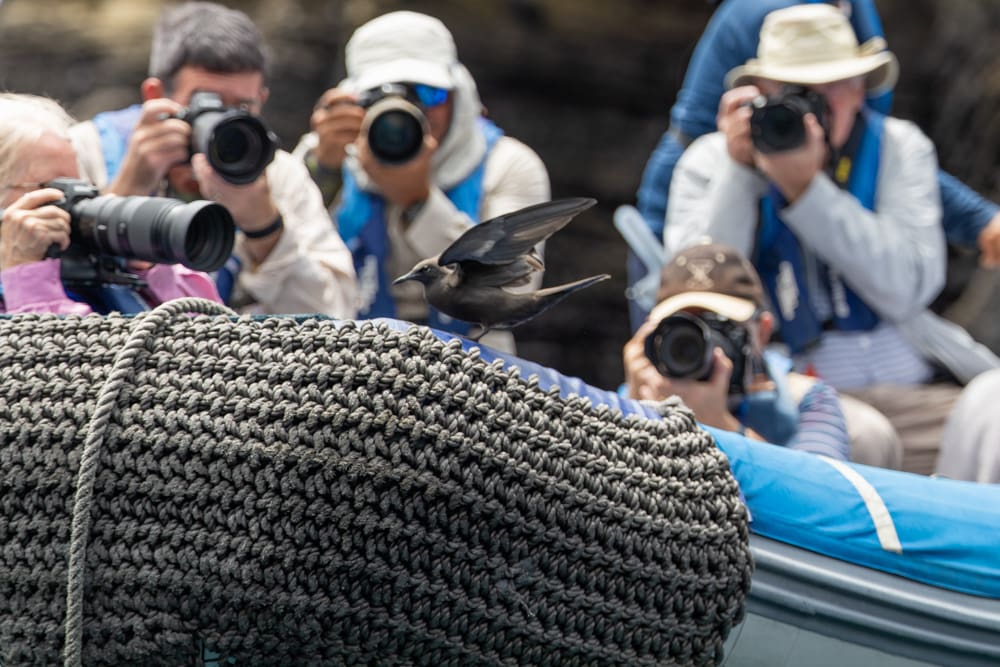
Wildlife is never far away; sometimes pushing the boundaries of your minimum focus distance
[Brown Noddy Tern]
When landing ashore wasn’t possible we’d utilize the 8-person rubber pangas (small boats) to access areas not possible on foot. The panga tours allowed us to photograph a variety of wildlife on the steep cliffs as well as in the water.
Everyday featured two to three outings returning to the yacht for meals, gear changes and rest. The luxury ship featured reasonably-sized rooms with full beds and private bathrooms. A large dining area and lounge featured a bar and a large monitor, great for reviewing and sharing images.
We conducted three separate image reviews where everyone shared a few images they had taken over the previous few days. Sharing images has many benefits for both the photographer and the viewer. The photographer can get feedback on the effectiveness of their technique and composition; a real life, real-time response to one of your images, is one of the most impactful lessons you can learn.
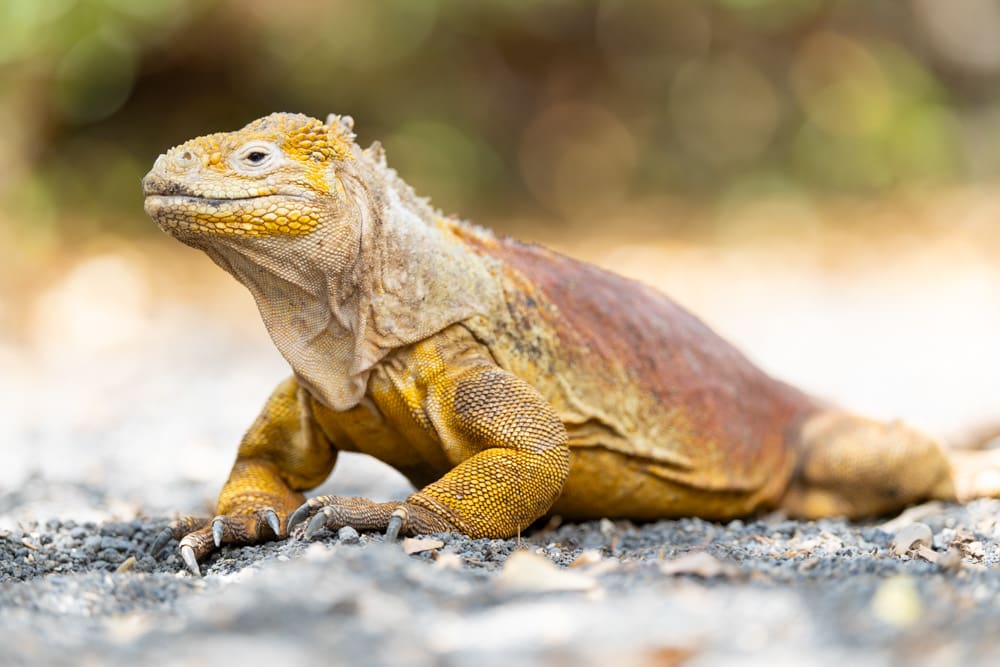
Canon R5 mark II, RF 100-300MM F/2.8 L IS USM @ 224MM | F/2.8 | 1/200 SEC | ISO 100
[Galapagos Land Iguana]
Learning from others success and failure can be equally beneficial. As we go around the room and talk about the merits of an image or technique, you’ll hear a variety of viewpoints. Discussions will arise where important lessons are learned and new ideas are hatched. I believe this is one of the greatest techniques for growing as a photographer.
The animals
The Galapagos Islands features a unique collection of animals that are approachable and easy to photograph. A huge variety of birds can be found here, too many to list, but here are a few of my favorites. Brown Pelicans are very common, but also very dynamic. They perch on prominent rocks, dive into the ocean to catch fish with a large pouch. The Blue-footed Booby, perhaps the most iconic of the Galapagos birds, with its namesake blue feet and dazzling eyes. The Waved Albatross, with a massive wing span of more than 8 feet, are graceful in skies but awkward and endearing on land. The Great Frigatebird, the males with a red neck, can be found in large numbers soaring in the air above your ship. Tiny Yellow Warblers are a flash of color navigating the trees and bushes on land. Galapagos Mocking birds can be found running along the shores of Espanola Island, sometimes approaching inches in front of camera lenses. The American Flamingo offers a dramatic shape and color that can offer a variety of compositional options.
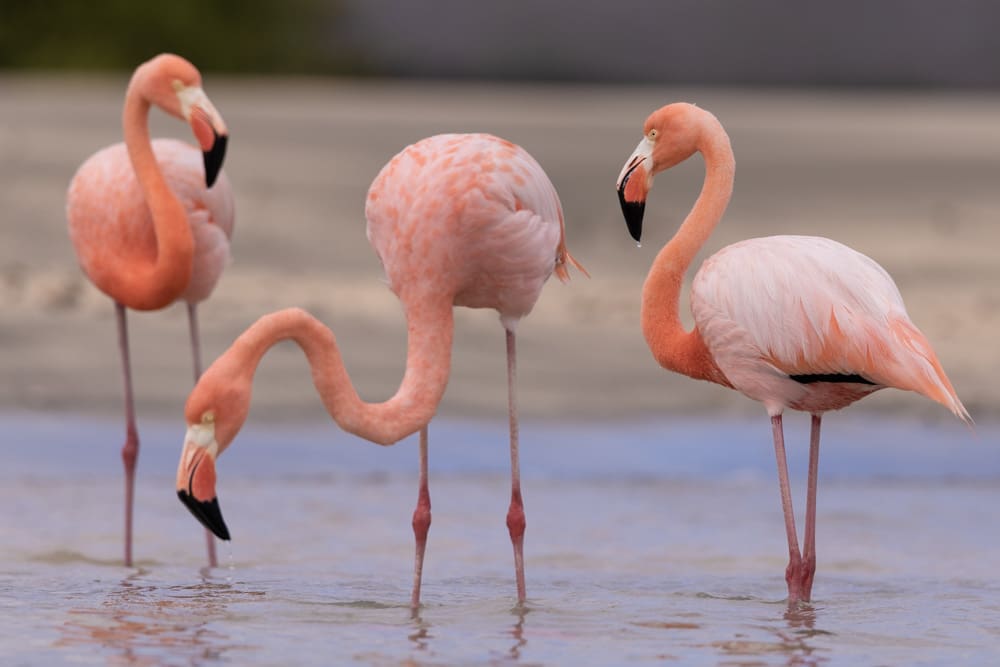
Canon R5 mark II, RF 100-300MM F/2.8 L IS USM @ 300MM | F/2.8 | 1/3200 SEC | ISO 100
[American Flamingo]
The most prolific land animal you’ll encounter is the Marine Iguana. They feed in the ocean then come ashore and literally pile up in large groups to conserve body heat. They are easily approachable and when photographed up close, they resemble Godzilla. The Galapagos Land Iguana are light in color and can be found more inland from the ocean. They move slowly though the bush and dig holes to sleep in.
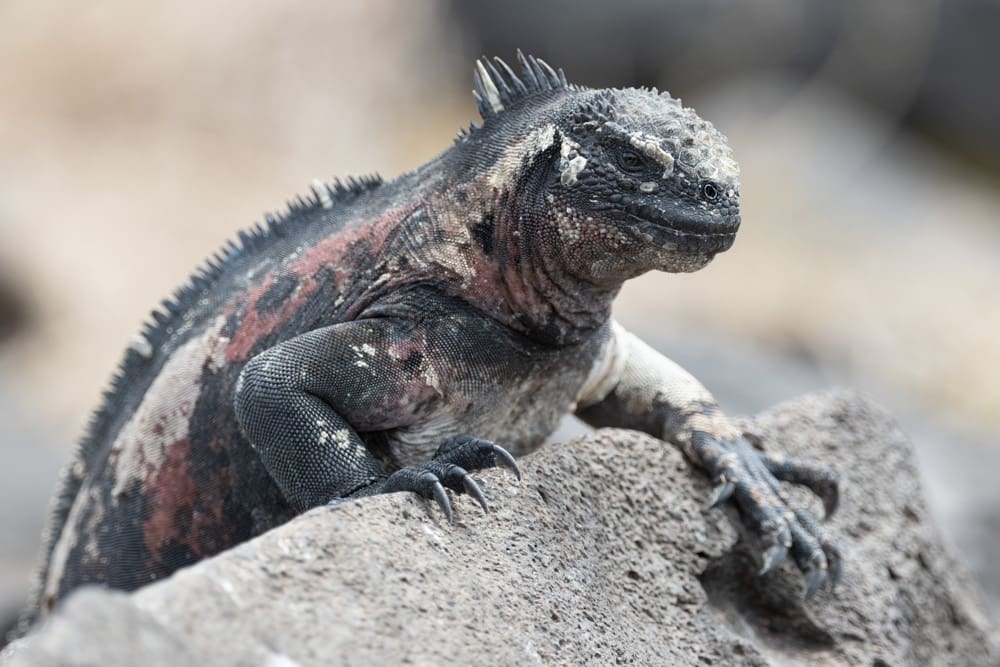
Canon R7, RF 100-300MM F/2.8 L IS USM + RF 1.4x @ 263MM | F/4 | 1/1600 SEC | ISO 400
[Marine Iguana]
Galapagos’ most iconic animal is certainly the Giant Tortoise. The term giant is appropriate as they can weight up to 900lbs (400kg). One of the longest living animals in the world, they have recorded life spans of up to 176 years. These animals are supported by a number of tortoise rehabilitation centers, one of which we visit on the island of Isabela.
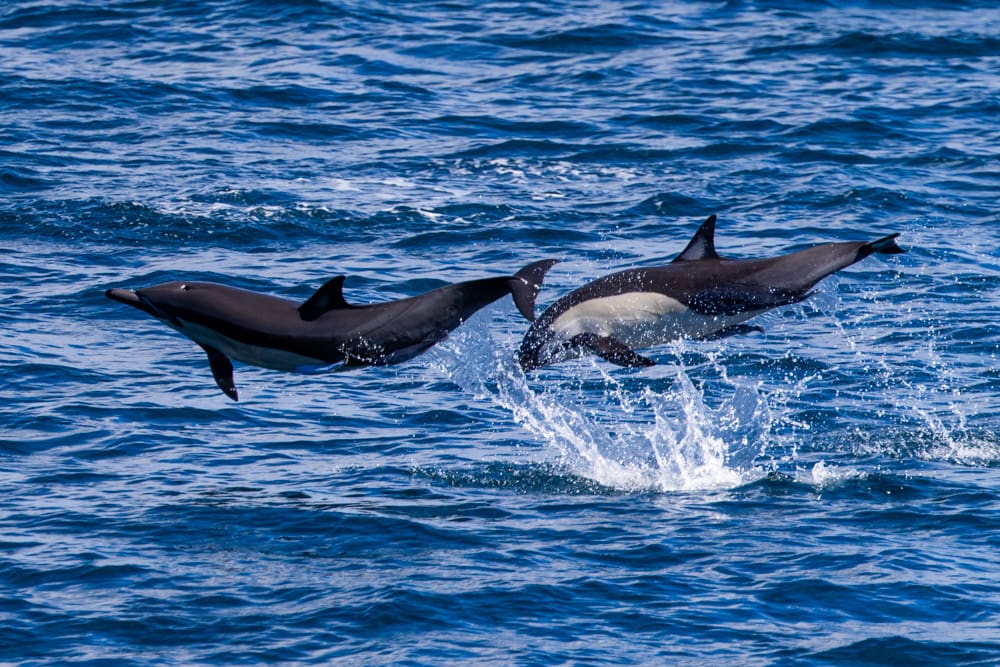
Canon R5 mark II, RF 100-300MM F/2.8 L IS USM +RF 1.4x @ 280MM | F/4 | 1/2000 SEC | ISO 200
[Common Dolphin]
Marine wildlife is plentiful and while snorkeling you may come across the Green Sea Turtle, Galapagos Sea Lion, Stingray, White-tipped Reef Shark, dolphins or a wide variety of other colorful fish. An underwater camera can make a great addition to your standard photo gear.
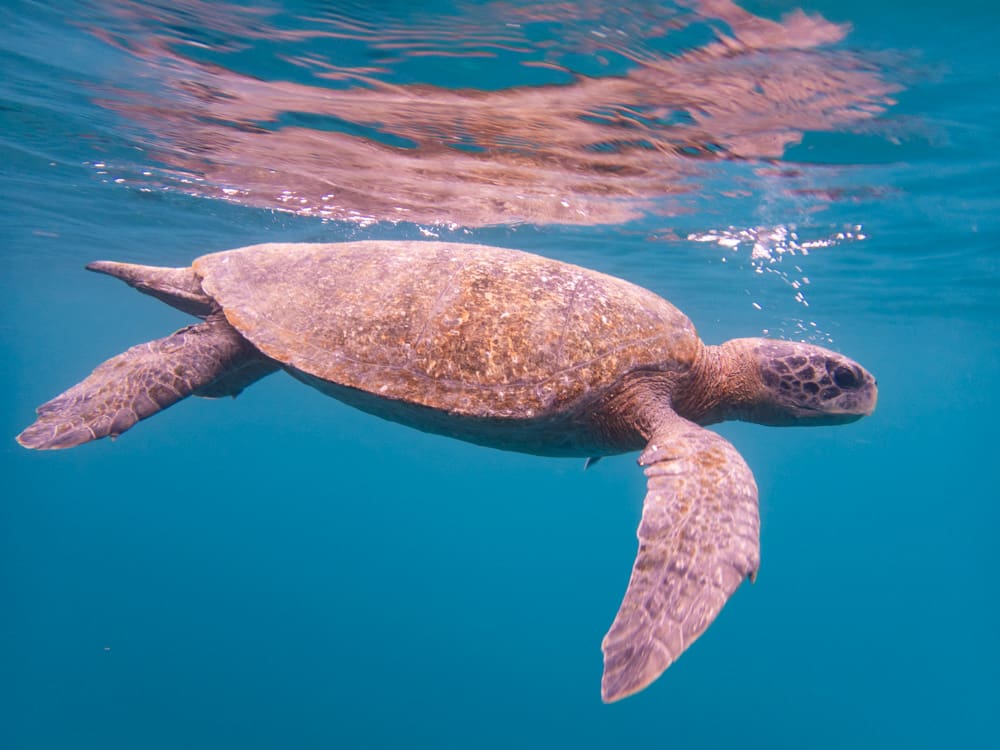
Olympus TG-6 @ 4.5MM | F/2.8 | 1/80 SEC | ISO 100
[Green Sea Turtle]
The equipment
Travelers on our tour utilized a wide variety of photographic equipment: Canon, Nikon, Sony, Panasonic, and Olympus. All cameras were of the mirrorless type, as were most of the lenses, but some travelers were adapting SLR lenses. Superzoom lenses, like the Nikon 28-400mm, were used by some to eliminate the need to change lenses. Most folks used a variety of popular telephoto zooms like: Canon 100-400mm and 100-500mm, Nikon 70-200mm, 100-400mm and 180-600mm, Sony 100-400mm, and Panasonic 100-300mm and 100-400mm.
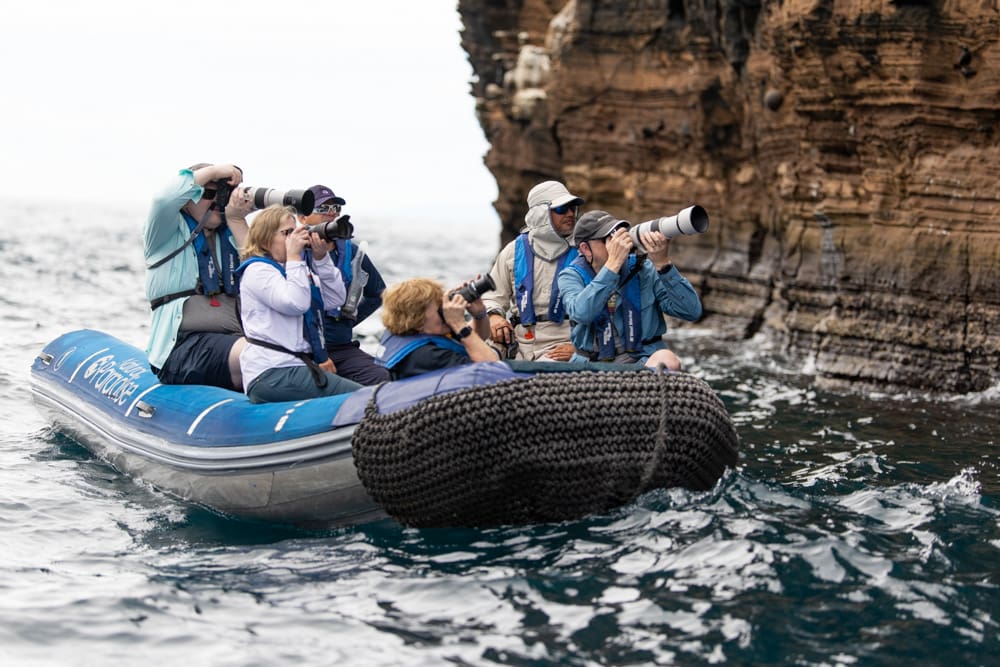
The Pangas enable us to get close to the shorebird action
The long lenses were necessary for birds and small wildlife at a distance. However, due to the Galapagos animal’s relaxed nature around humans, the longest of lenses were frequently not necessary. Many photographers would carry a camera with a long zoom lens for most of the work, but would then switch to their phone’s camera for more close-up opportunities. Some photographers utilized shooting with two cameras, but many would just swap to a normal or wide lens when the opportunity presented itself.
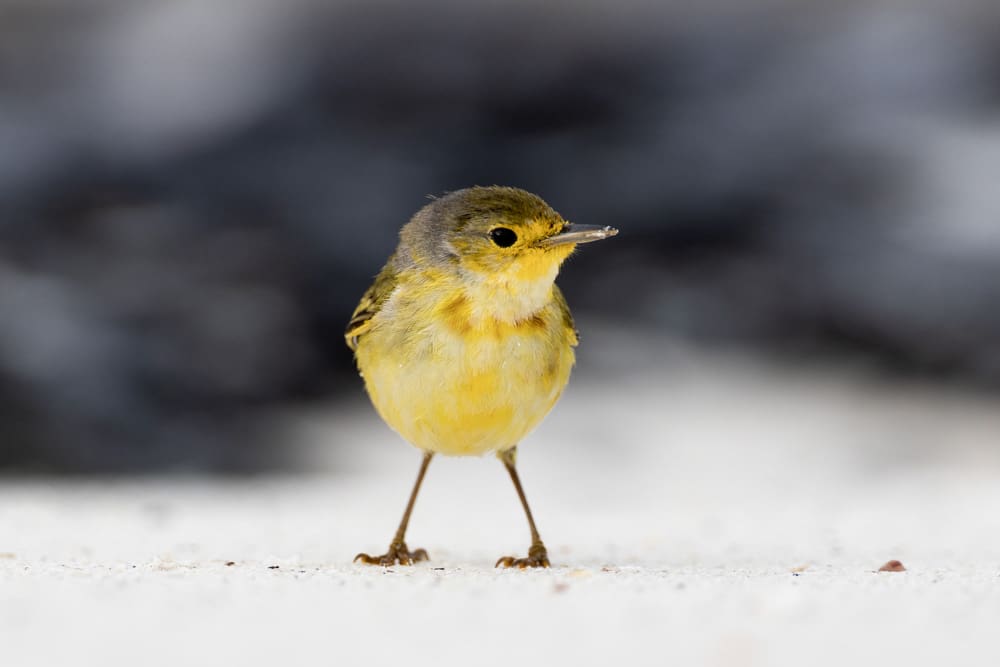
Canon R7, RF 100-300MM F/2.8 L IS USM + RF 1.4x @ 338MM | F/4 | 1/1000 SEC | ISO 400
[Yellow Warbler]
My equipment
I had a couple of new gear items to work with on this tour and I’m happy to say that they worked out great. The Canon R5 Mark II arrived just in time for me to take on the trip and match it up with the Canon 100-300mm f/2.8. This combination accounted for more than 50% of my photographs. I did have, and use, both the 1.4x and 2.0x teleconverters with the 2x seeing only very light use.
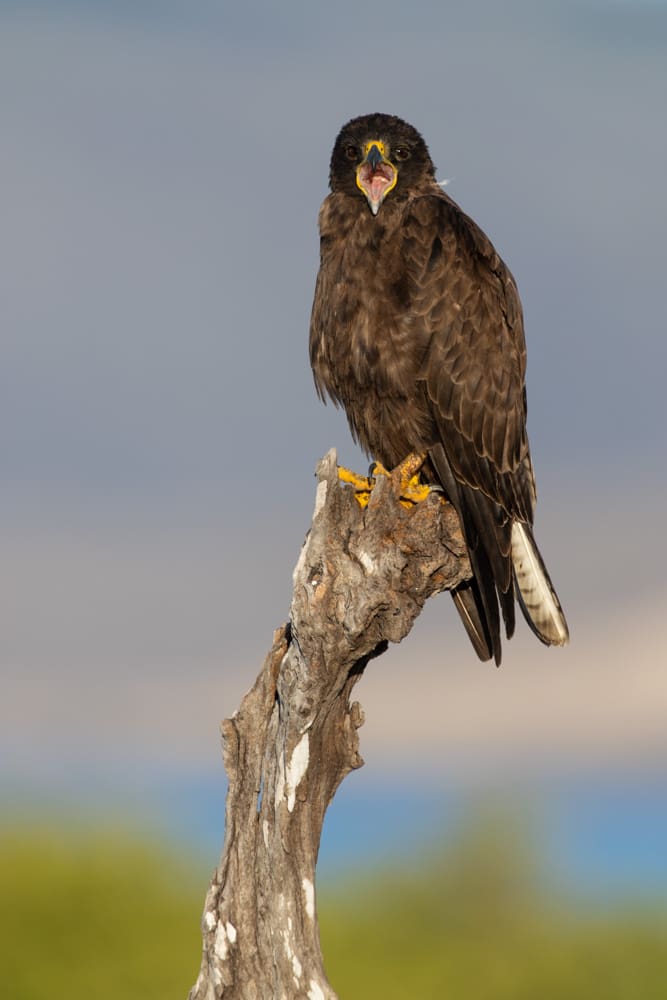
Canon R5 mark II, RF 100-300MM F/2.8 L IS USM + RF 2x @ 600MM | F/5.6 | 1/400 SEC | ISO 100
[Galapagos Hawk]
As I frequently do, I brought with me a crop-frame camera, the Canon R7, to use when needing a bit more reach. For this tour I used it for about 25% of my total shots. Most of the R7 use was with the 100-300mm lens without any extenders.
Surprisingly I never needed to swap out memory cards, I was able to store all my photos on a single set of 128GB cards in my R5, and 64GB cards in my R7. I had both cameras set to record RAW files to multiple cards so that I was instantly backed up. Each evening I’d download to my laptop and back up on a solid-state hard drive.
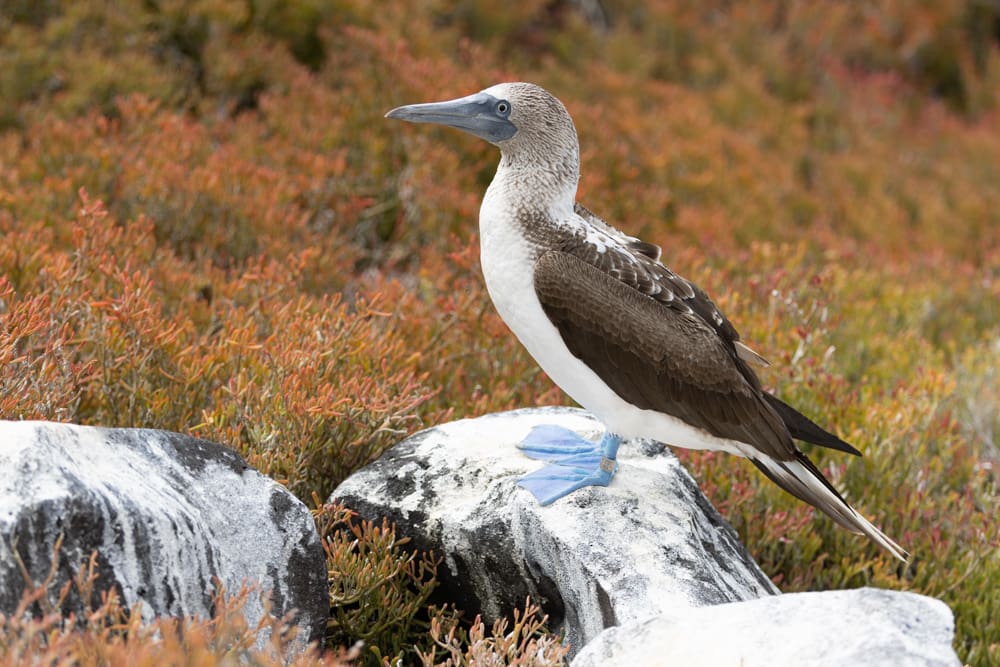
Canon R7, RF 100-300MM F/2.8 L IS USM @ 135MM | F/2.8 | 1/1600 SEC | ISO 100
[Blue-footed Booby]
I shot a total of about 4000 images, which I’ll have to admit is a bit on the light side. Keep in mind that I had visited all our locations before and I was also working as tour leader, which tends to take a bit of time and attention away from shooting. As I tell our guests, our priorities are as follows: health and safety first, client’s getting great shots second, lastly John & Michelle can photograph if the first two requirements are being met.
And as some of you may be wondering – yes there will be a Canon R5 Mark II Complete Camera Guide. This tour provided me a great opportunity to work with the camera in the field.
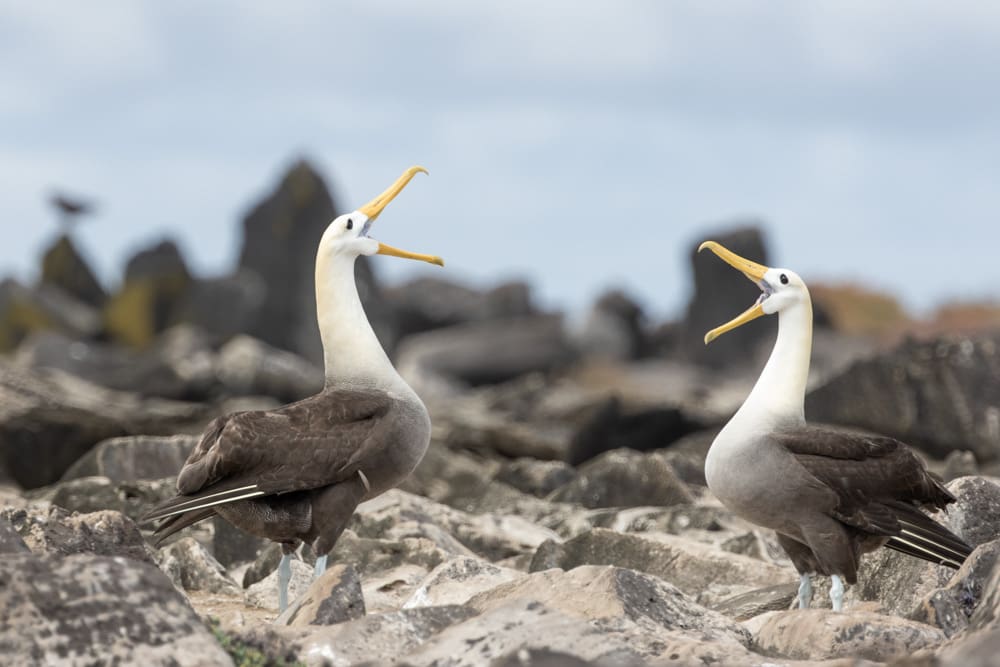
Canon R7, RF 100-300MM F/2.8 L IS USM + RF 2X @ 376MM | F/5.6 | 1/1000 SEC | ISO 400
[Waved Albatross]
Join us next year
If this sounds like an ideal photography vacation for you, join us in 2025! Yes, we are going again next October, and you’re invited. We’ll be keeping the same ship and route so you can clearly see here what it will be like. We’ll have 8 rooms, with a variety of amenities, available for single or double travelers. For single travelers you can opt to share a room or select one of the two single cabins.
As with all our tours we welcome beginner photographers as well as pros. If you are traveling with a spouse or someone who doesn’t identify as a full-blown photographer – that’s ok too. We filled the boat for this year’s tour and we expect to do the same in 2025. Check out our Wild Galapagos tour page and don’t delay; sign-up today.
Become part of John’s inner circle
Sign up for the newsletter here — it’s free.
Want to become a better photographer?
Check out John’s selection of photography and camera classes here.
